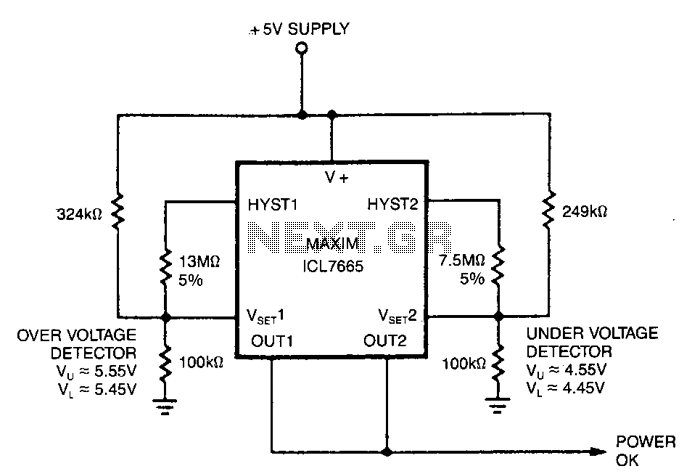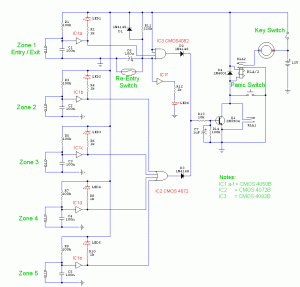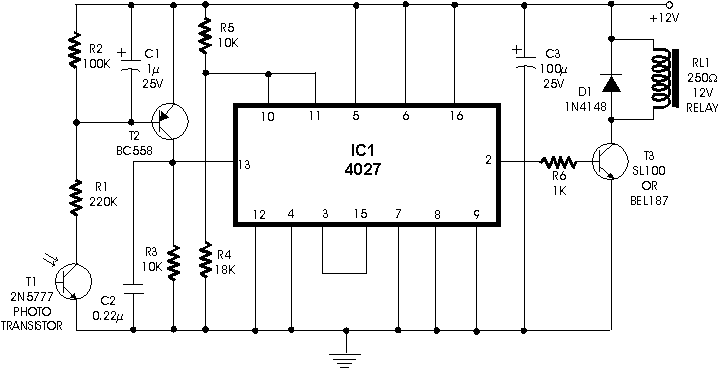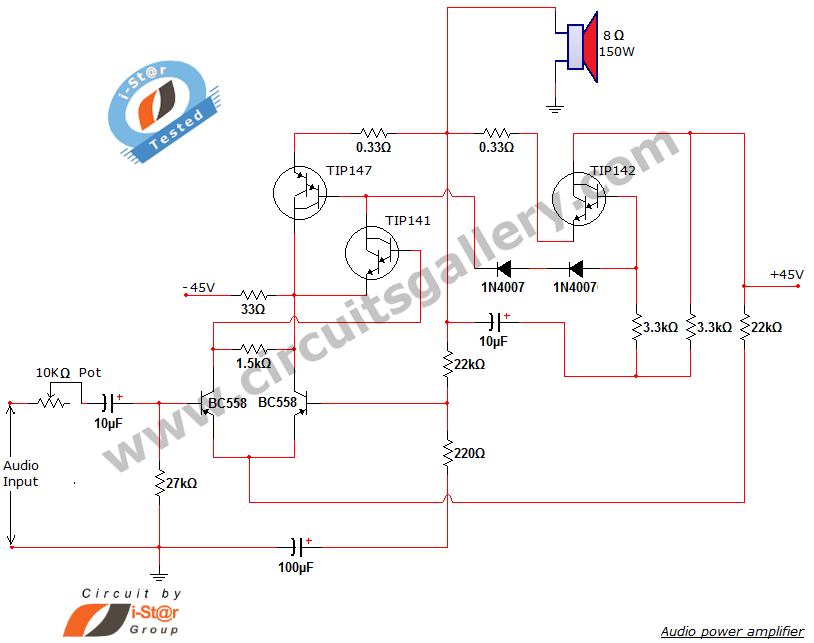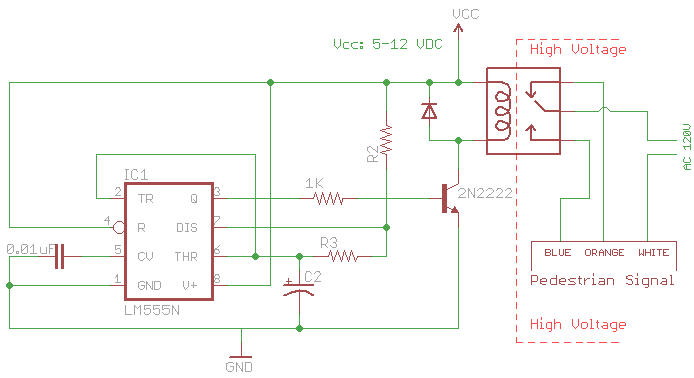
single zone home alarms systems

This is a simple single-zone home alarm system circuit. Its features include entry delays, a timed siren cut-off, and automatic exit. It is designed to be used with the usual types of normally-closed input devices such as foil tape, micro switches, magnetic reed contacts, and infrared sensors. Additionally, it can be easily modified to accept normally-open devices, such as pressure mats.
The single-zone home alarm system circuit is a straightforward yet effective solution for residential security. The design typically includes a microcontroller or a dedicated alarm IC that manages the alarm's operation. The circuit is powered by a standard DC power supply, ensuring reliable operation.
Input devices, primarily normally-closed types, are connected to the system to detect unauthorized entry. Foil tape can be applied to windows or doors, creating a circuit that will trigger the alarm if broken. Micro switches and magnetic reed contacts can be installed on doors and windows, providing a reliable mechanism to signal the circuit when these entry points are opened. Infrared sensors can be employed to detect movement within a designated area, adding an additional layer of security.
The entry delay feature allows users a brief period to deactivate the alarm after entry, providing convenience without compromising security. The timed siren cut-off feature ensures that the alarm does not sound indefinitely, typically set to a duration that is sufficient to alert occupants and neighbors while preventing unnecessary disturbance. The automatic exit feature allows users to leave the premises without triggering the alarm, enhancing usability.
For those needing flexibility, the circuit can be modified to accommodate normally-open devices, such as pressure mats. These devices operate by completing a circuit when weight is applied, making them suitable for use in various locations, such as under rugs or in entryways.
Overall, this single-zone home alarm system circuit is designed for ease of use and adaptability, making it an excellent choice for enhancing home security.This is a simple single zone home Alarms Systems circuit. Its features include Entry delays, a timed Siren Cut-Off and and automatic Exit. It`s designed to be used with the usual types of normally-closed input devices such as - - foil tape - micro switches - magnetic reed contacts and infra red sensor. But it can be Easily modified to accept normally-open devices - such as pressure mats. 🔗 External reference
The single-zone home alarm system circuit is a straightforward yet effective solution for residential security. The design typically includes a microcontroller or a dedicated alarm IC that manages the alarm's operation. The circuit is powered by a standard DC power supply, ensuring reliable operation.
Input devices, primarily normally-closed types, are connected to the system to detect unauthorized entry. Foil tape can be applied to windows or doors, creating a circuit that will trigger the alarm if broken. Micro switches and magnetic reed contacts can be installed on doors and windows, providing a reliable mechanism to signal the circuit when these entry points are opened. Infrared sensors can be employed to detect movement within a designated area, adding an additional layer of security.
The entry delay feature allows users a brief period to deactivate the alarm after entry, providing convenience without compromising security. The timed siren cut-off feature ensures that the alarm does not sound indefinitely, typically set to a duration that is sufficient to alert occupants and neighbors while preventing unnecessary disturbance. The automatic exit feature allows users to leave the premises without triggering the alarm, enhancing usability.
For those needing flexibility, the circuit can be modified to accommodate normally-open devices, such as pressure mats. These devices operate by completing a circuit when weight is applied, making them suitable for use in various locations, such as under rugs or in entryways.
Overall, this single-zone home alarm system circuit is designed for ease of use and adaptability, making it an excellent choice for enhancing home security.This is a simple single zone home Alarms Systems circuit. Its features include Entry delays, a timed Siren Cut-Off and and automatic Exit. It`s designed to be used with the usual types of normally-closed input devices such as - - foil tape - micro switches - magnetic reed contacts and infra red sensor. But it can be Easily modified to accept normally-open devices - such as pressure mats. 🔗 External reference
